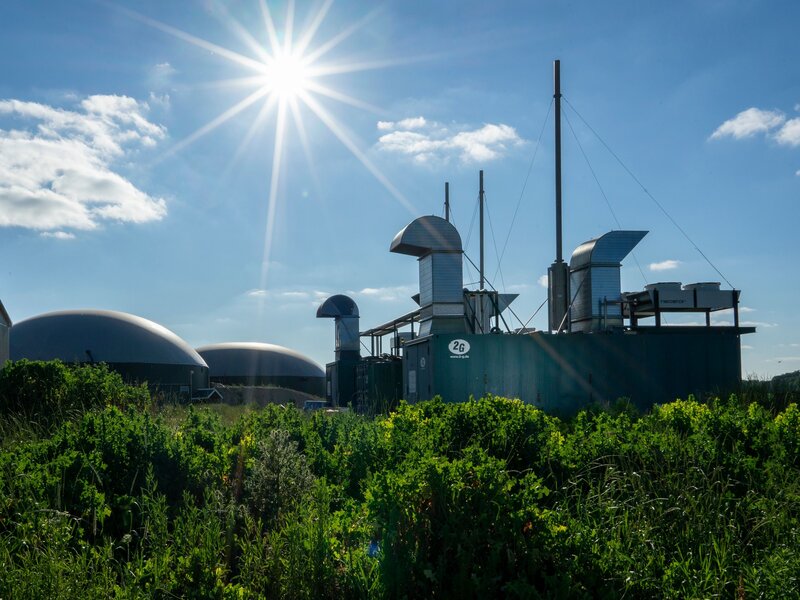The farm receives off-farm waste and converts it into power and fertilizer
Farm reduces methane emissions by 25 times and supplies electricity to 500 homes.
Facts & figures

Athlone Farms Inc., a 600-acre dairy and crop farm southeast of Stratford, has constructed a biogas system to convert methane from cow manure and bio-waste into electrical and thermal energy. The system, built by PlanET Biogas Solutions Inc., is powerful enough to provide electricity for at least 500 homes. It utilizes methane produced from farm manure and imported organic waste, reducing atmospheric methane and providing high-quality crop nutrients and clean bedding for the farm's dairy animals.
The farm owner received approval from the Ontario Power Authority (OPA) in 2011 to produce power for Ontario's electricity grid. PlanET Biogas Solutions Inc. ordered a 500kW/h 2G Twin Pack Biogas CHP system equipped with 2 x 250kW/h energy conversion systems operating synchronized. This CHP module is highly efficient and provides many advantages over more common power generation systems. The customer has signed a 20-year contract with the OPA to supply power to the grid.
Apart from using the manure from the farm as a fuel source, the anaerobic digester will accept off-farm organic green waste that would otherwise go to landfills. By collecting the methane from manure and green waste, and converting it into electrical and thermal power, the farm produces 25 times less atmospheric methane than would naturally be produced.
The farm is a receiving facility that will accept the off-farm waste, which will be contained in covered storage before being mixed with manure in a nearby dome-covered biodigester. A second digester of the same has been planned to be added soon. Additionally, another technology installed will separate the residue solids for use as semi-sterile animal bedding or fertilizer.


